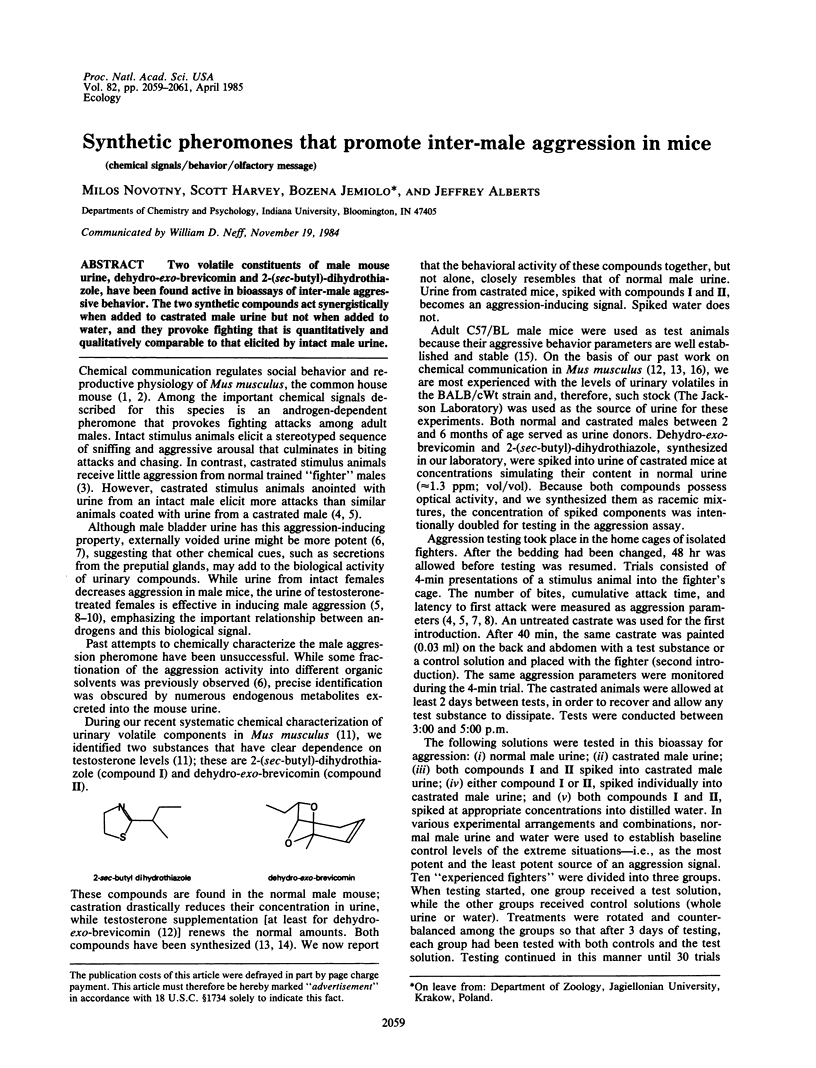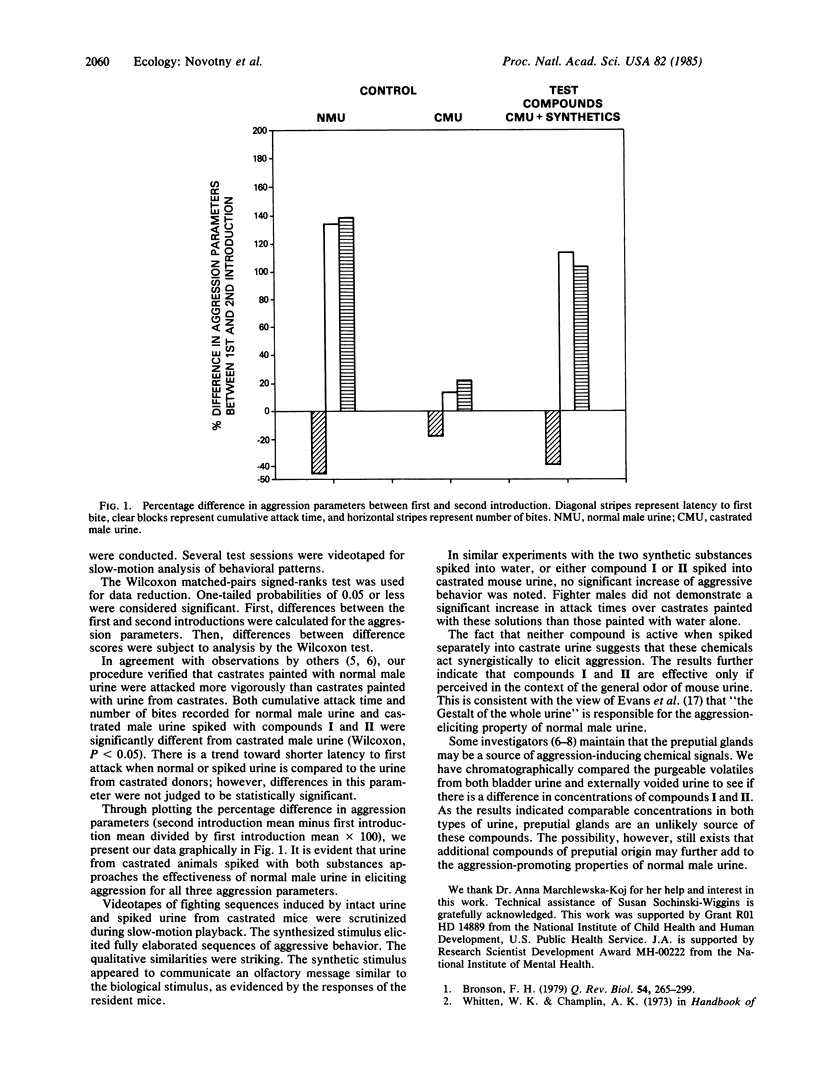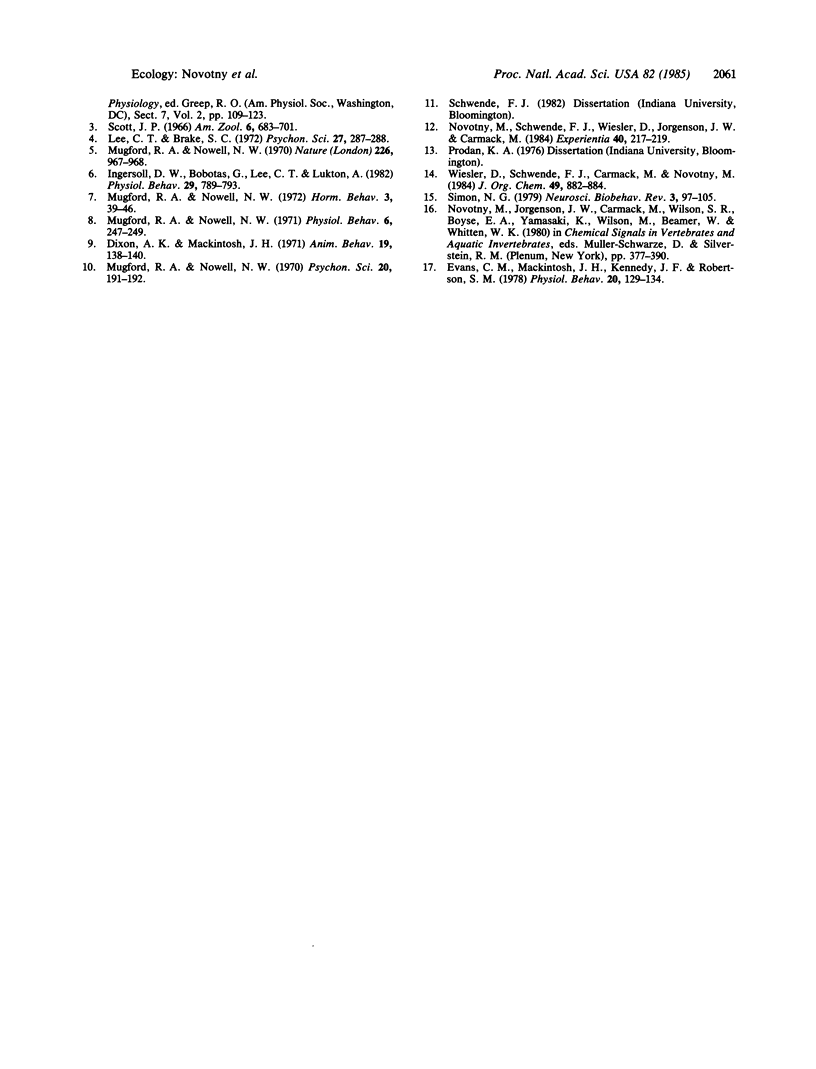Abstract
Two volatile constituents of male mouse urine, dehydro-exo-brevicomin and 2-(sec-butyl)-dihydrothiazole, have been found active in bioassays of inter-male aggressive behavior. The two synthetic compounds act synergistically when added to castrated male urine but not when added to water, and they provoke fighting that is quantitatively and qualitatively comparable to that elicited by intact male urine.
Full text
PDF


Selected References
These references are in PubMed. This may not be the complete list of references from this article.
- Bronson F. H. The reproductive ecology of the house mouse. Q Rev Biol. 1979 Sep;54(3):265–299. doi: 10.1086/411295. [DOI] [PubMed] [Google Scholar]
- Evans C. M., Mackintosh J. H., Kennedy J. F., Robertson S. M. Attempts to characterise and isolate aggression reducing olfactory signals from the urine of female mice Mus musculus L. Physiol Behav. 1978 Feb;20(2):129–134. doi: 10.1016/0031-9384(78)90064-1. [DOI] [PubMed] [Google Scholar]
- Ingersoll D. W., Bobotas G., Lee C. T., Lukton A. beta-Glucuronidase activation of latent aggression-promoting cues in mouse bladder urine. Physiol Behav. 1982 Nov;29(5):789–793. doi: 10.1016/0031-9384(82)90326-2. [DOI] [PubMed] [Google Scholar]
- Mugford R. A., Nowell N. W. Pheromones and their effect on aggression in mice. Nature. 1970 Jun 6;226(5249):967–968. doi: 10.1038/226967a0. [DOI] [PubMed] [Google Scholar]
- Mugford R. A., Nowell N. W. The dose-response to testosterone propionate of preputial glands, pheromones and aggression in mice. Horm Behav. 1972 Mar;3(1):39–46. doi: 10.1016/0018-506x(72)90005-0. [DOI] [PubMed] [Google Scholar]
- Mugford R. A., Nowell N. W. The preputial glands as a source of aggression-promoting odors in mice. Physiol Behav. 1971 Mar;6(3):247–249. doi: 10.1016/0031-9384(71)90034-5. [DOI] [PubMed] [Google Scholar]
- Novotny M., Schwende F. J., Wiesler D., Jorgenson J. W., Carmack M. Identification of a testosterone-dependent unique volatile constituent of male mouse urine: 7-exo-ethyl-5-methyl-6,8-dioxabicyclo[3.2.1]-3-octene. Experientia. 1984 Feb 15;40(2):217–219. doi: 10.1007/BF01963608. [DOI] [PubMed] [Google Scholar]
- Scott J. P. Agonistic behavior of mice and rats: a review. Am Zool. 1966 Nov;6(4):683–701. doi: 10.1093/icb/6.4.683. [DOI] [PubMed] [Google Scholar]


